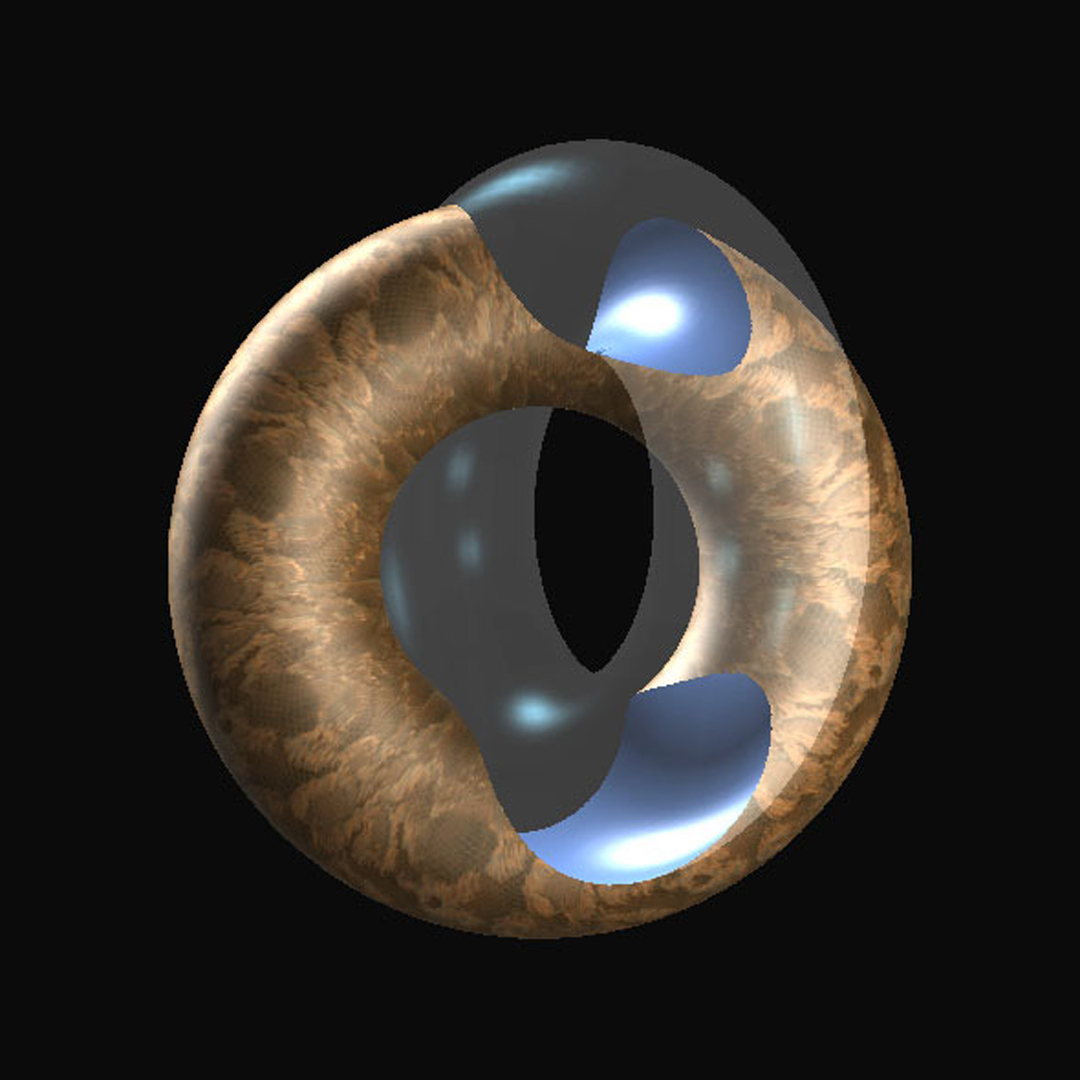“Hardware accelerated rendering of CSG and transparency” by Kelley, Gould, Pease, Winner and Yen
Conference:
Type(s):
Title:
- Hardware accelerated rendering of CSG and transparency
Presenter(s)/Author(s):
Abstract:
This paper describes algorithms for implementing accurate rendering of CSG and transparency in a hardware 3D accelerator. The algorithms are based on a hardware architecture which performs front-to-back Z-sorted shading; a multiple-pass algorithm which allows an unlimited number of Z-sorted object layers is also described. The multiple-pass algorithm has been combined with an image partitioning algorithm to improve efficiency, and to improve performance of the resulting hardware implementation.
References:
1. Akeley, Kurt and T. Jermoluk, “High-Performance Polygon Rendering”, Computer Graphics, Vol. 22, No. 4, August 1988, 239-246
2. Akeley, Kurt, “RealityEngine Graphics”, ACM Computer Graphics Conference Proceedings, August 1993, 109-116
3. Atherton, Peter, “A Scan-Line Hidden Surface Removal Procedure for Constructive Solid Geometry”, Computer Graphics, July 1983, 73-82
4. Carpenter, Loren, “The A-buffer, an Antialiased Hidden Surface Method”, Computer Graphics, Vol. 18, No. 3, July 1984, 103-108
5. Deering, Michael, and S. Nelson, “Leo: A System for Cost Effective 3D Shaded Graphics”, ACM Computer Graphics Conference Proceedings, August 1993, 101-108
6. Deering, Michael, S. Winner, B. Schediwy, C. Duffy and N. Hunt, “The Triangle Processor and Normal Vector Shader: A VLSI System for High Performance Graphics”, Computer Graphics, Vol. 22, No. 4, August 1988, 21-30
7. Foley, James, A. van Dam, S. Feiner and J. Hughes, “Computer Graphics Principles and Practice, 2nd Edition”, Addison-Wesley, 1990, transparency 754-755, CSG tree 557-558, CSG b-rep 546-547
8. Fuchs, Henry, G. Abram, and J. Poulton, “Near Real-Time Shaded Display of Rigid Objects”, Computer Graphics, Vol. 17, No. 3, July 1983, 65-72
9. Goldstein, R. and R. Nagel, “3-D Visual Simulation”, Simulation 16(1), January 1971, 25-31
10. Goldfeather, Jack and J. Hultquist, “Fast Constructive Solid Geometry Display in the Pixel-Powers Graphics System”, Computer Graphics, Vol. 20, No. 4, August 1986, 107-116
11. Harrell, Chandlee, and F. Fouladi, “Graphics Rendering Architecture for a High Performance Desktop Workstation”, ACM Computer Graphics Conference Proceedings, August 1993, 93-100
12. Kay, D., “Transparency, Refraction and Ray Tracing for Computer Synthesized Images”, Thesis, Cornell University, January 1979
13. Kedem, G. and J. Ellis, “The Raycasting Machine”, Proceedings of ICCD, October 1984, 533-538
14. Kelley, Michael, S. Winner, and K. Gould, “A Scalable Hardware Render Accelerator using a Modified Scanline Algorithm”, Computer Graphics, Vol. 26, No. 2, July 1992, 241-248
15. Mammen, A., “Transparency and Antialiasing Algorithms Implemented with the Virtual Pixel Maps Technique”, Computer Graphics and Applications, 9(4), July 1989, 43- 55
16. Niimi, Haruo, Y. Imai, M. Murakami, S. Tomita and H. Hagiwara, “A Parallel Processor System for Three-Dimensional Color Graphics”, Computer Graphics, Vol. 18, No. 3, July 1984, 67-76
17. Rossignac, Jaroslaw, and A. Requicha, “Depth-Buffering Display Techniques for Constructive Solid Geometry”, IEEE Computer Graphics and Applications, September 1986, 29-39
18. Roth, Scott, “Ray Casting for Modeling Solids”, Computer Graphics and Image Processing, 18, 1982, 109- 67
19. Watkins, G. “A Real-Time Visible Surface Algorithm”, Computer Science Department, University of Utah, UTECH-CSC-70-101, June 1970
20. Whitted, T. “An Improved Illumination Model for Shaded Display”, CACM 23(6), June 1980, 343-349




